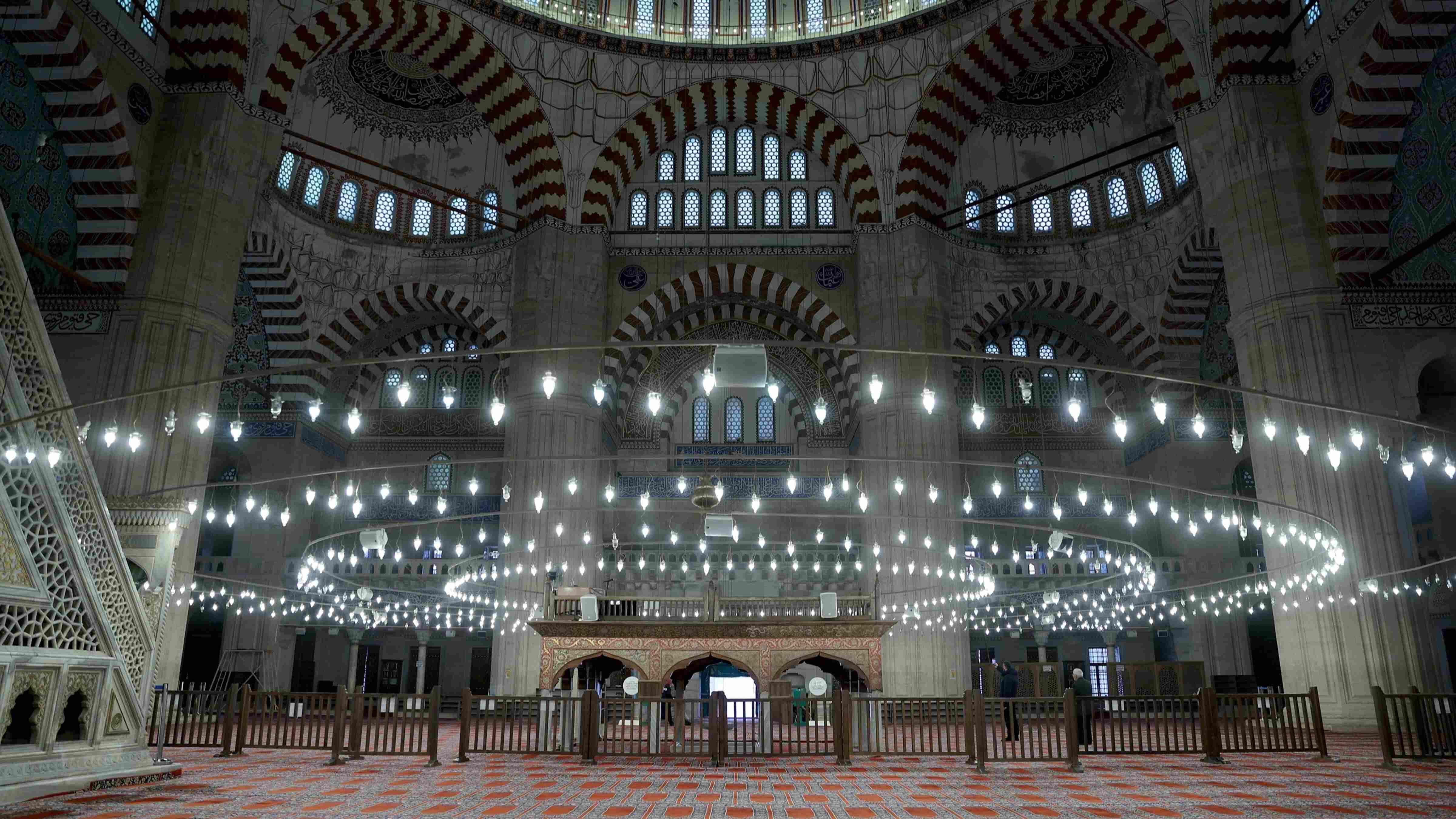
A Turkish court has suspended a controversial restoration project for the dome of the Selimiye Mosque in the northwestern province of Edirne, one of the most significant works of Ottoman architect Mimar Sinan, after weeks of heated public debate.
A local administrative court issued the stay of execution, citing the risk of “irreparable damage” to the UNESCO World Heritage site if the plan were carried out.
The ruling followed a lawsuit filed by a citizen demanding the cancellation of the project.
Plans for the restoration called for major changes to the mosque’s iconic dome decoration, including replacing the 16th-century blue-and-red calligraphy and ornamentation with a stark black-and-white design.
Reports suggested that Quranic inscriptions, including Allah’s name inscribed on medallions, would be erased and replaced with new lettering by a modern calligrapher.
Previously, the project had been rejected three times by the Directorate General of Foundations’ scientific board, but later won approval from a higher preservation council.
Once images of the proposed redesign circulated online, they sparked criticism from art historians, conservation experts and civic groups.
Opponents argued that the plan was incompatible with international restoration principles and would distort the mosque’s historic character.
Prior to the ruling, prominent historian Professor İlber Ortaylı condemned the proposal, publishing a statement titled “Revival or Destruction?” on social media.
“Restoration that changes the original is not revival, but destruction,” he said, emphasizing that the 16th-century calligraphy by Hasan Çelebi, a student of the era’s famous calligrapher Ahmed Şemseddin Karahisari, must be fully preserved.
No contemporary artist’s signature should appear on the 450-year-old monument, according to Ortaylı.
Ortaylı warned against overprotective measures that prevent correction of mistakes, stating, “If there are spelling errors in the inscriptions, they should be corrected, and the excessive conservatism that seeks to preserve mistakes — even those that sometimes destroy the meaning of the verses — must be abandoned.”
Ortaylı also criticized the decision-making process, pointing out that experts in historic calligraphy and ornamentation were insufficiently consulted.
“There is a sense of group favoritism in this project. Anyone can see the aesthetic gap between the original structure and the proposed design. Apparently, this decision is either made incompetently or with favoritism,” Ortaylı said.
The famed historian emphasized that expert calligraphers and scholars specializing in historic mosque inscriptions should be included in restoration committees to ensure proper oversight.
Local heritage advocates also cautioned that if such interventions proceed, UNESCO could reconsider Selimiye’s World Heritage status.
Completed in 1575 during the reign of the Ottoman Sultan Selim II, the Selimiye Mosque is regarded by Sinan as his “masterpiece.”
Its vast dome and exquisite calligraphy are considered pinnacles of Ottoman architecture.